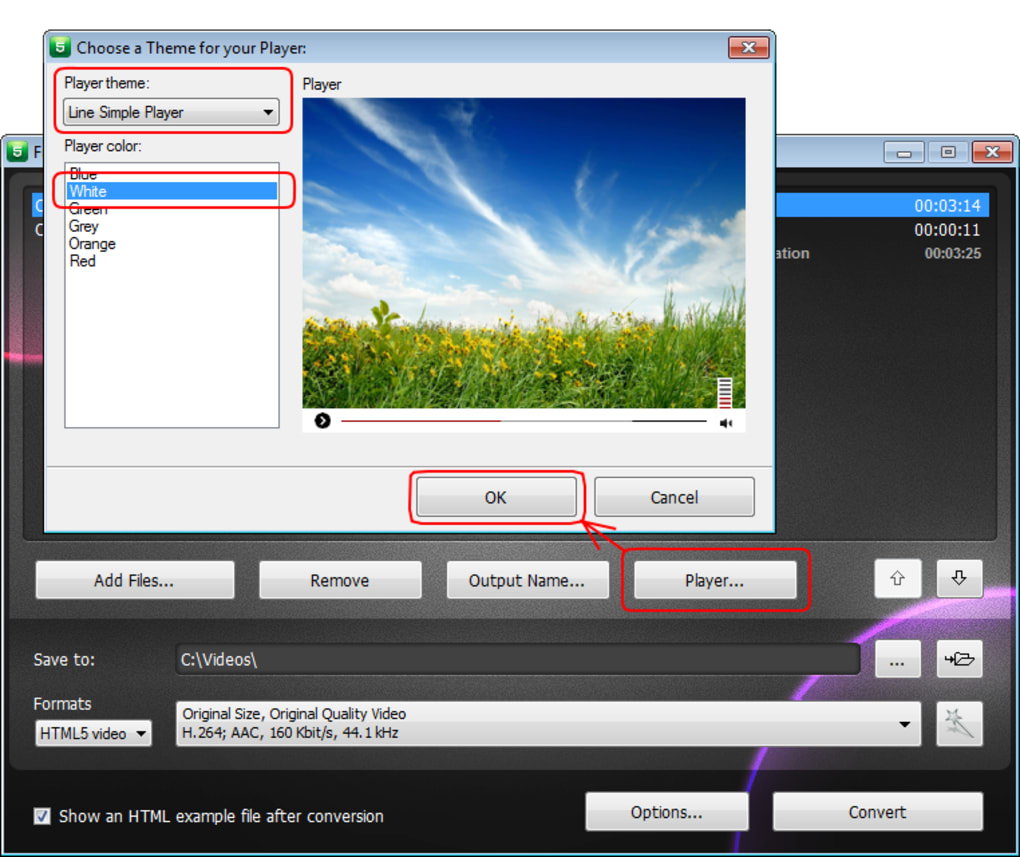

- #Html5 video player streaming how to#
- #Html5 video player streaming series#
- #Html5 video player streaming download#
This is delivered over HTTP, segmented into small chunks, and usually multiple bit rates are encoded so that the player can look at your network conditions to choose the best video bit rate to deliver an optimal viewing experience. Smooth Streaming has all of the typical characteristics of adaptive streaming. This was announced in October of 2008 as part of Silverlight, and is a feature of Internet Information Services (IIS) Media Services, an integrated HTTP-based media delivery platform. It supports both live and on-demand video.

Additionally, it works for both video on demand content, too. HTTP Live Streaming (HLS) is owned by Apple and works is based on the idea of adaptive streaming, and usually done in 10 second chunks. Moreover, this does not allow the quality of the video to change mid-download, unlike the formats listed below. What happens when the viewer leaves after one minute? Wasted bandwidth.
#Html5 video player streaming download#
The player will start video playback as soon as it has enough data to do so, but it will continue to download until it has received the whole file, regardless of how much the user watches. The downfall to using something like this is the wasted bandwidth. So your video player creates a direct HTTP connection with the CDN’s (Azure) servers to retrieve the content. Using the standard HTTP protocol, progressively downloaded files are generally delivered through a content delivery network (CDN). Once the video has been cached, subsequent viewing does not require any buffering. A short period of time is required to buffer and cache the beginning of the media file before it starts playing. This downloads and caches video on the viewer’s computer. It encodes and stores your file multiple bit-rates on the disk. The idea is that Smooth Streaming creates “steps” of bitrates. They might say, it’s larger! I don’t have that kind of bandwidth! In fact, less is sent over the wire than exists on disk. Some folks freak out when they take a, say, 200 meg video file and encode it for Smooth Streaming and the resulting directory is, say, 500 megs. You kind have to see it to get it, but it’s actually clever in its simplicity. Scott Hanselman describes it (well, Smooth Streaming at least) well. From there, the player can choose between different bitrates/resolutions and adapt to larger or smaller chunks automatically as network conditions change. The ‘adaptive’ part of this is the fact that video is encoded at multiple bitrates and resolutions creating chunks of multiple sizes. First and foremost, we should understand how adaptive streaming works, considering many of these technologies that lie ahead rely on this.Īdaptive streaming segments video into small chunks. There are a number of formats to choose from, so let’s go through some of the ones you can use today.

#Html5 video player streaming how to#
In this tutorial, I’ll explain how to use this cloud media solution to get set-up and start experimenting with delivering live or on demand video.
#Html5 video player streaming series#
This is the first of a series of articles about using Azure Media Services to create and consume HTML5 video. It was an outstanding education in cutting edge video technology, and I’m glad that I can take my experience with me in this role and teach others much of what I learned there. Thank you for supporting the partners who make SitePoint possible.Įver want to create your own -like app for livestreaming your workhsl? How about your own YouTube-esque program for playing back your previously recorded video? You might have used Flash, Java, or Silverlight for rich media in the past but with Chrome 42 announcing that that those plug-ins are no longer supported, now is as good a time to go HTML5 as ever.īefore I worked at Microsoft, I was a senior engineer on the Product Development team at Comcast, where I worked on video players for a number of platforms, including the web, Xbox One, Xbox 360, and SmartGlass. This article is part of a web dev tech series from Microsoft.


 0 kommentar(er)
0 kommentar(er)
